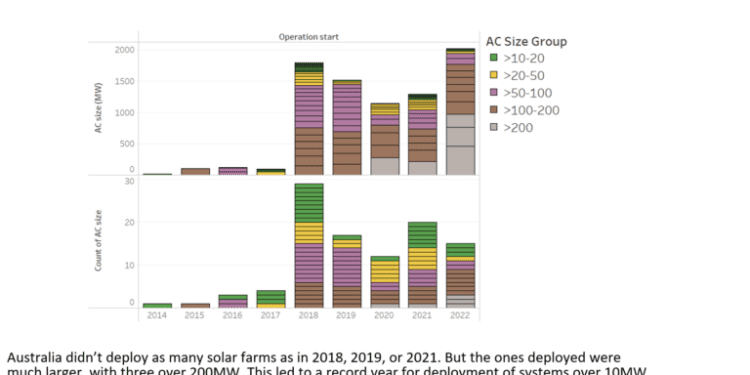For a decade or so, Australia has been a global leader in rooftop solar PV penetration. According to data from SunWiz, which tracks this market, nearly one out of every three Australian homes now has solar panels on top. Furthermore, rooftop solar power is about to become #1 in the country in terms of power generation capacity. Rooftop solar panels combine for approximately 20 gigawatts (GW) of power capacity in Australia, and more that 3.3 million households have rooftop solar PV. Another 10 GW are expected to be installed in just the next 3 years.
Rooftop solar PV is set to surpass coal power capacity soon — once the 1680-MW Liddell coal power plant is fully closed. South Australia has long been the leader in rooftop solar power penetration, but it has been surpassed by Queensland, where 82% of roofs deemed suitable for solar PV have them. In South Australia, the figure is 78%, while New South Wales and Victoria have 51% and 43% penetration respectively.
SunWiz reported that Australia’s solar PV capacity had increased 20% in 2022, by 5.3 GW. This was on the back of a weak first half of the year for residential solar power, but a stronger ending to the year. In total, SunWiz says Australia ended the year with 21.7 GW of cumulative rooftop solar PV installations and another 9.7 GW of non-rooftop solar PV. There were more than 300,000 new solar power installations completed in 2022.
It’s clear that Australia is leading the way when it comes to rooftop solar PV penetration. With more than 3 million households already having rooftop solar PV and another 10 GW expected to be installed in the next 3 years, Australia is well on its way to becoming a global leader in renewable energy. The country’s sunny climate and commitment to renewable energy are helping to drive this growth, and it’s likely that other countries will soon follow suit.
FAQ
Q1. How electric car batteries work?
A1. Electric car batteries are typically lithium-ion batteries that store energy and power the motor. They are recharged by plugging the car into an electric outlet or charging station.
Q2. What electric car has the longest range?
A2. The Tesla Model S has the longest range of any electric car currently on the market, with a range of up to 370 miles on a single charge.
Q3. How electric car batteries are recycled?
A3. Electric car batteries are recycled by breaking them down into their component parts and then separating out the metals, plastics, and other materials for reuse. The metals are melted down and reused in new products, while the plastics and other materials are recycled into new products.





